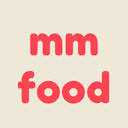Stay Safe with Your Thali: Navigating Moong Dal Allergy in Indian Cuisine
Learn how to enjoy Indian thali meals safely with moong dal allergy. Discover key risks in thalis, safe dish alternatives, and how mm food app's AI detects allergens to protect you.
MM Food Team

Dine Confidently Anywhere
Get the MM Food app for instant menu translation and allergy detection.
Stay Safe with Your Thali: Navigating Moong Dal Allergy in Indian Cuisine
Indian thali meals captivate with their vibrant variety of curries, dals, breads, and desserts, but for those with moong dal allergies, this culinary experience can become risky. Moong dal (split yellow mung beans) is widely used in Indian cooking, making allergic reactions a common concern. This guide empowers you to enjoy thali meals safely while leveraging modern tools like the mm food app for worry-free dining.
Understanding Moong Dal Allergy and Symptoms
Moong dal allergies occur when the immune system mistakenly identifies proteins in mung beans as harmful. Symptoms can include:
- Skin reactions (hives, itching, swelling)
- Digestive issues (nausea, vomiting, cramps)
- Respiratory problems (wheezing, nasal congestion)
- Severe cases may involve anaphylaxis, requiring immediate medical intervention
Why Thali Meals Pose Risks
A traditional thali often includes hidden sources of moong dal across multiple dishes:
- Dal preparations: Used in sambhar, khichdi, or as standalone lentils
- Starter items: Pesarattu (moong dosa) or vada fried in contaminated oil
- Snacks: Bhajiyas and pakoras with moong flour batter
- Sweets: Halwas or ladoos thickened with mung bean paste
Communicating your allergy reliably can be challenging, especially when menus aren’t in your native language or kitchen practices risk cross-contact.
Leveraging the mm food App for Safer Dining
mm food transforms how you navigate thali meals with moong dal allergies through:
1. Menu Translation Technology
Instantly translate Indian menu items into your language to understand ingredients in dishes like "Hara Moong Chaat" or "Pongal". This clarity helps avoid accidental exposure.
2. Allergen Detection Feature
Select "moong dal allergy" from preset dietary restrictions (or create a custom profile). The AI scans each thali component, flagging unsafe dishes like:
- ▶️ Moong sprouts salad
- ❌ Dhokla (steamed moong cake)
- ❓ Gravies with thickening agents It highlights safer alternatives such as chickpea-based chana masala or vegetable curries with tolerance checks.
3. Cross-Contamination Warnings
Get alerts about foods prepared near allergens, like fried snacks cooked in shared oil, helping you make informed choices.
Proactive Tips for Dining Out
- Always declare "Main moong dal se allergic hoon" (I’m allergic to moong dal) clearly to servers
- Ask if besan (chickpea flour) or urad dal dishes can substitute moong items
- Prioritize grilled meats, rice dishes, and yogurt-based sides like raita when uncertain
- Carry emergency medication like epinephrine auto-injectors
Savor Thalis Confidently
You needn't miss India's culinary heritage due to dietary restrictions. With vigilance and smart tools like mm food's real-time menu analysis, thali dining becomes both joyous and secure. Download the app today—transform invisible allergens into visible alerts, one safe bite at a time.

Dine Confidently Anywhere
Get the MM Food app for instant menu translation and allergy detection.